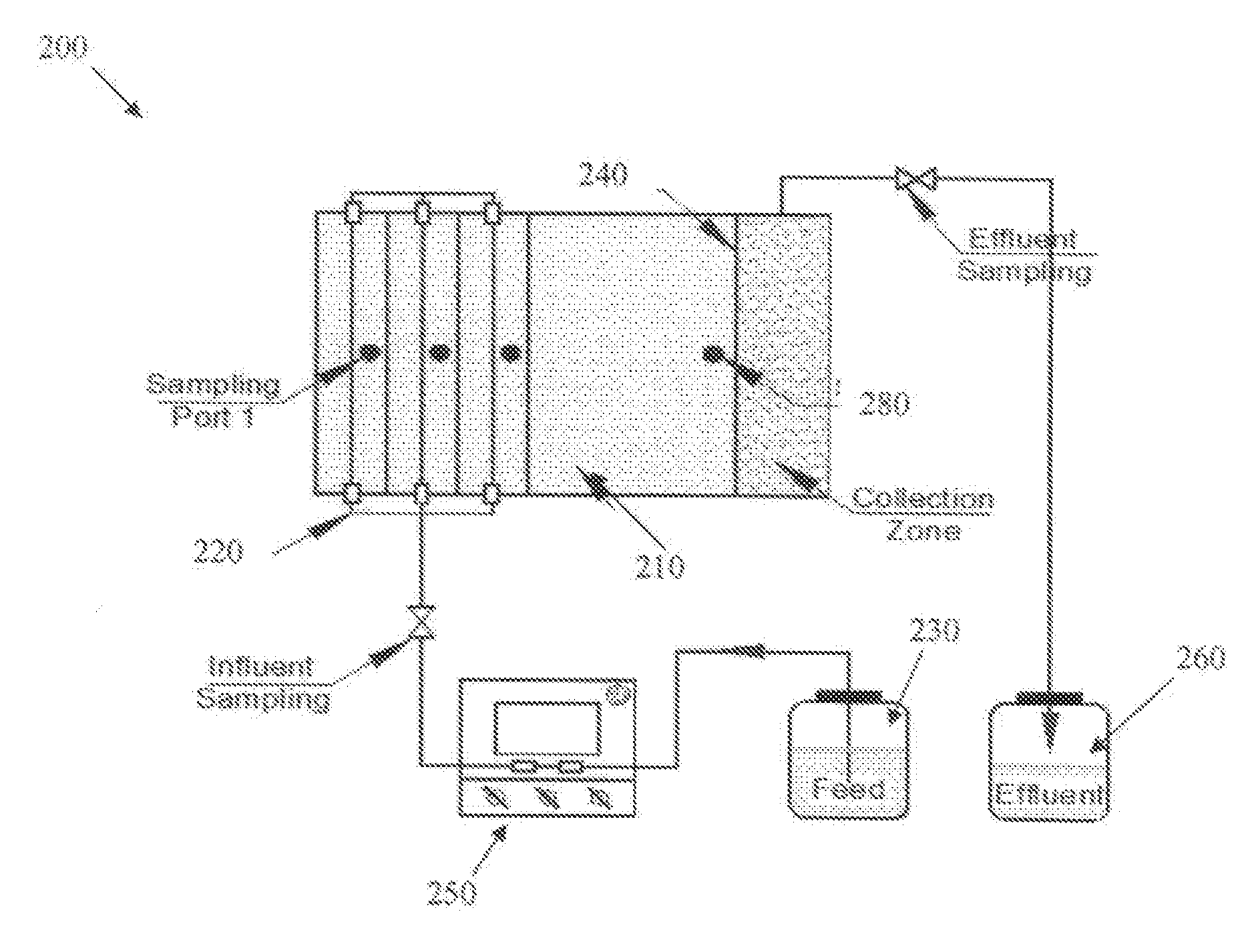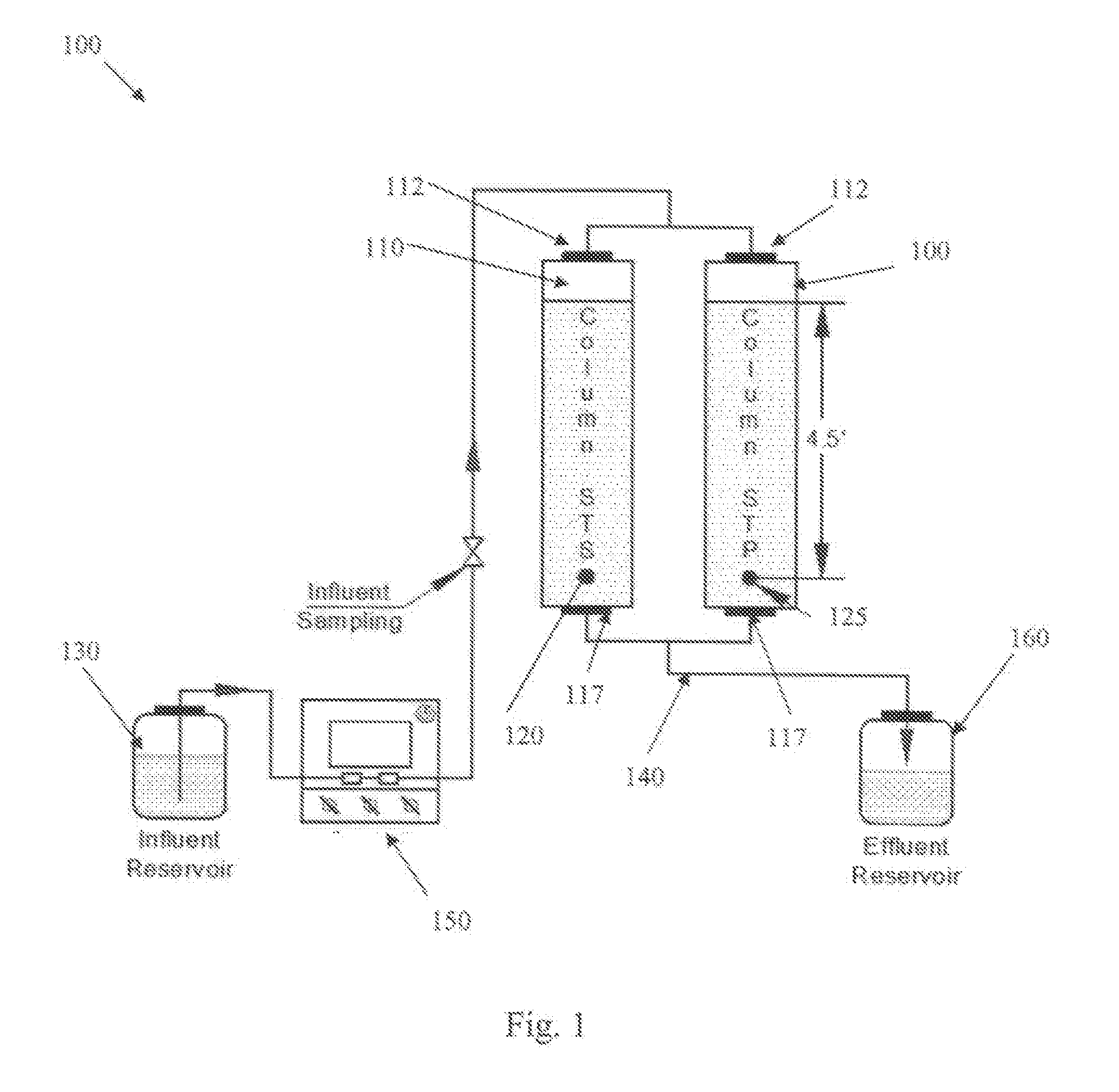Passive Underground Drainfield For Septic Tank Nutrient Removal Using Functionalized Green Filtration Media
a technology of functional green filtration media and underground drainfield, which is applied in the direction of water cleaning, liquid displacement, separation processes, etc., can solve the problems of affecting ecosystem integrity and human health, affecting the possibility of water reuse, and human health problems such as methemoglobinemia, liver damage and possible cancer, etc., and achieves cost effectiveness
- Summary
- Abstract
- Description
- Claims
- Application Information
AI Technical Summary
Benefits of technology
Problems solved by technology
Method used
Image
Examples
Embodiment Construction
[0043]Before explaining the disclosed embodiments of the present invention in detail it is to be understood that the invention in the context of a utility patent is not limited in its application to the details of the particular arrangements shown in this document since the invention is capable of other embodiments. Also, the terminology used herein is for the purpose of description and not of limitation. This invention is related to co-pending U.S. patent application Ser. No. 12 / 200,140 filed on Aug. 28, 2008 which is incorporated by reference.
[0044]The following descriptions focus on how these developed recipes using green sorption media can help improve the performance of nutrient removal in septic tank system as examples at University of Central Florida (UCF), in Orlando Fla.
[0045]Initially, the possible sorption media were screened through the following five criteria: 1) the relevance of denitrification process, 2) the removal efficiency as evidenced in the literature with rega...
PUM
| Property | Measurement | Unit |
|---|---|---|
| size | aaaaa | aaaaa |
| specific gravity | aaaaa | aaaaa |
| height | aaaaa | aaaaa |
Abstract
Description
Claims
Application Information
 Login to View More
Login to View More - R&D
- Intellectual Property
- Life Sciences
- Materials
- Tech Scout
- Unparalleled Data Quality
- Higher Quality Content
- 60% Fewer Hallucinations
Browse by: Latest US Patents, China's latest patents, Technical Efficacy Thesaurus, Application Domain, Technology Topic, Popular Technical Reports.
© 2025 PatSnap. All rights reserved.Legal|Privacy policy|Modern Slavery Act Transparency Statement|Sitemap|About US| Contact US: help@patsnap.com



